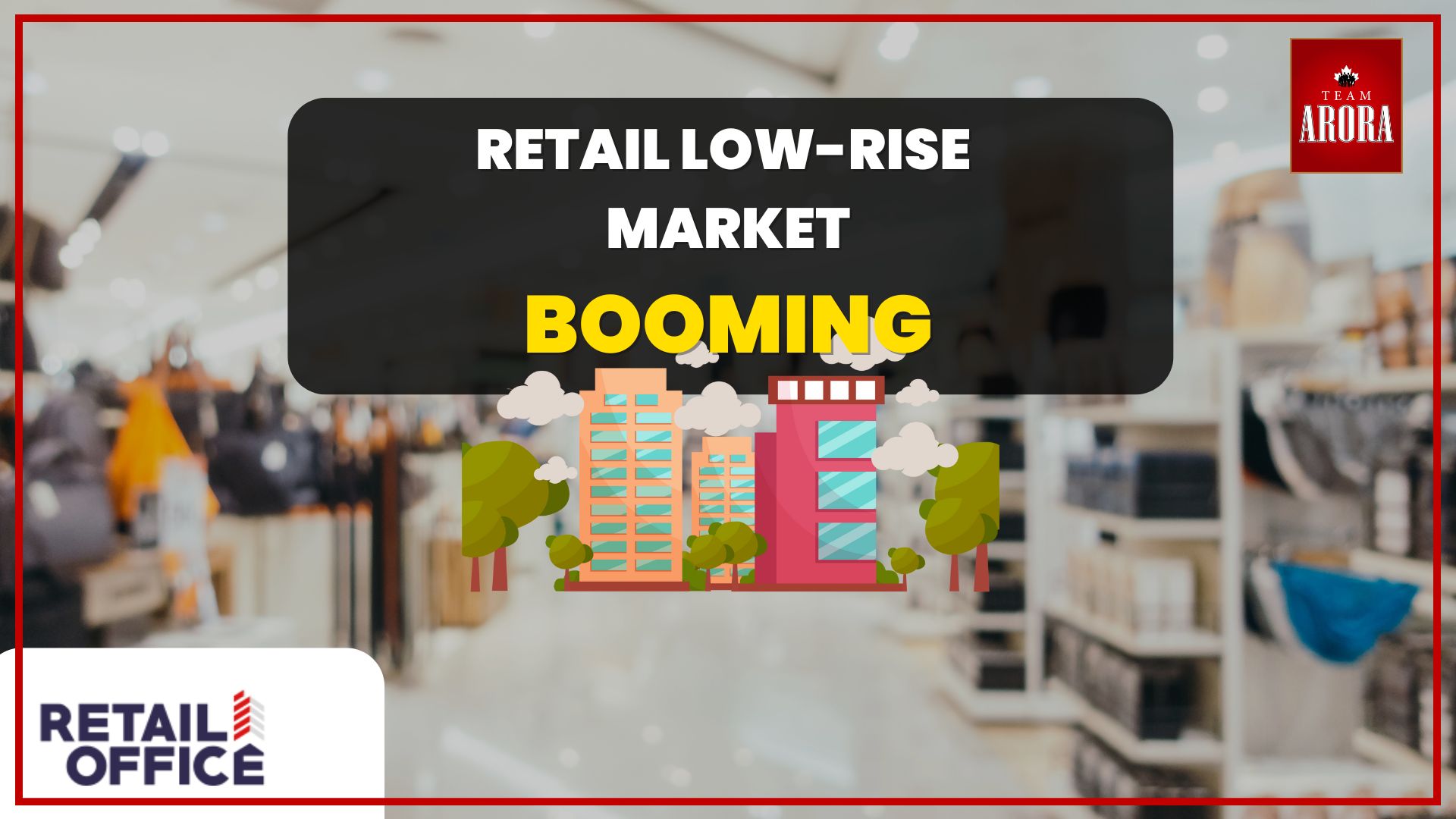7 Trends Investors Can’t Ignore in 2025
Commercial real estate (CRE) in Ontario has always been a dynamic sector. But 2025 is shaping up to be a turning point. From post-pandemic adaptations to ESG-focused development and shifting tenant demands, the CRE landscape is undergoing massive transformation. For investors and developers alike, staying informed is essential. In this guide, we’ll explore seven key commercial real estate trends that are reshaping Ontario’s property market—and how you can use them to gain an edge.
1. Office Spaces Are Being Reimagined
With hybrid and remote work now mainstream, traditional office models are under pressure. Companies are downsizing large corporate leases in favour of flexible, cost-efficient office spaces. Investors are taking note—demand is shifting toward buildings with shared amenities, collaborative zones, and short-term leasing options.
Co-working operators are expanding in cities like Toronto, Mississauga, and Hamilton. Smart investors are repurposing older office stock into tech hubs, co-working facilities, and medical/healthcare uses to reflect modern tenant preferences.
Investor Tip: Consider retrofitting existing buildings into shared office ecosystems or hybrid-flex office spaces that appeal to post-pandemic tenants.
2. The Industrial and Warehousing Boom Continues
The demand for industrial and warehousing space in Ontario remains strong in 2025, driven by e-commerce, manufacturing, and logistics expansion. Vacancy rates in GTA West, Brampton, and Milton remain among the lowest in Canada.
Modern distribution centers with high ceilings, energy-efficient systems, and proximity to transportation corridors are highly sought after. Investors are exploring suburban and rural areas to meet the demand that central urban zones can’t accommodate.
Investor Tip: Look for land zoned for light industrial use within proximity to Highway 401, 407, or CP rail corridors.
3. Retail Isn’t Dead—It’s Evolving
Contrary to outdated belief, retail real estate in Ontario isn’t declining—it’s adapting. The most successful investors in 2025 are those backing mixed-use plazas, experiential retail centers, and essential service strip malls.
Neighborhood plazas anchored by grocery stores, pharmacies, daycares, and medical clinics are seeing strong occupancy and tenant stability. High street retail near transit hubs continues to attract foot traffic. Retail landlords are also integrating flexible leasing terms to help tenants adapt quickly to changing consumer needs.
Investor Tip: Focus on retail assets with long-term leases from essential services and a solid footfall base.
4. ESG Is Now a Requirement, Not a Bonus
Environmental, Social, and Governance (ESG) standards are no longer optional. In 2025, both tenants and institutional investors are demanding greener, smarter, and healthier commercial buildings. This includes energy-efficient HVAC systems, solar-ready rooftops, water conservation features, and wellness certifications (like WELL and LEED).
In Ontario, government incentives for green retrofits, along with rising carbon taxes, make ESG-aligned investments not only ethical—but financially strategic.
Investor Tip: Look for buildings with existing green certifications or ones that can be upgraded affordably to meet new ESG benchmarks.
5. Zoning Reform Is Unlocking Hidden Opportunities
Municipalities across Ontario are introducing zoning changes to stimulate mixed-use development and higher-density corridors. Transit-oriented development (TOD) is being prioritized—especially around the upcoming LRT and GO expansions in Mississauga, Brampton, and Hamilton.
Previously single-use industrial or retail sites are being upzoned to allow for office-residential mixes or higher floor-area ratios (FARs). This creates exceptional value-add potential for developers and land investors who understand planning frameworks.
Investor Tip: Work with planners and commercial brokers to identify overlooked zones being prepped for intensification or transit investment.
6. Financing and Lending Standards Are Tightening
With interest rates elevated and lenders becoming more cautious in 2025, investors must approach financing strategically. CMHC-backed loans are more attractive than ever for multi-residential development, while mixed-use properties with stable cash flow remain bankable.
Banks are now favouring borrowers with strong ESG policies, clean environmental records, and detailed exit plans. Bridge financing and private debt options are seeing a rise as investors seek flexibility.
Investor Tip: Build relationships with local credit unions and boutique lenders familiar with commercial projects in Ontario.
7. Secondary Markets Are Gaining Investor Attention
While Toronto remains Ontario’s CRE epicenter, secondary cities like London, Waterloo, Windsor, Barrie, and Sudbury are rapidly emerging as attractive investment hubs. Lower land prices, steady population growth, and municipal tax incentives are luring developers and commercial tenants alike.
These smaller cities offer the perfect balance: strong fundamentals, manageable competition, and healthy cap rates.
Investor Tip: Don’t ignore smaller urban markets. Their risk-return profiles in 2025 are some of the best in Canada.
Final Thoughts: Ontario CRE Demands Strategic Foresight
The commercial real estate landscape in Ontario is full of opportunity—but success requires adaptability, research, and bold decision-making. From evolving office and retail models to growing ESG pressure and zoning reform, 2025 calls for a strategic mindset.
Whether you’re acquiring your first commercial plaza, building a light industrial facility, or retrofitting a mid-rise office, aligning with these trends will not only future-proof your investments—it’ll position you at the forefront of market growth.
At RetailnOffice, we specialize in helping investors identify, evaluate, and close on high-performing commercial properties across Ontario. Connect with our team today to discuss active listings, market insights, and tailored opportunities that fit your investment goals.
FAQs: Commercial Real Estate in Ontario, 2025
- What sectors are leading Ontario’s commercial real estate growth in 2025?
In 2025, industrial and warehousing continue to lead, driven by e-commerce and logistics. Additionally, mixed-use retail centers and ESG-certified office spaces are seeing strong demand due to shifting work trends and environmental priorities, making them attractive to both institutional and private investors. - Is it a good time to invest in smaller Ontario cities?
Yes. Secondary markets like Windsor, Barrie, London, and Sudbury offer excellent returns with lower entry costs. These cities are attracting tenants, developers, and investors due to growth potential, tax incentives, and a more balanced supply-demand environment compared to major urban centers like Toronto. - How important is ESG compliance for new CRE investments?
ESG compliance is increasingly critical in Ontario’s CRE sector. Tenants prefer sustainable spaces, and lenders are prioritizing green-certified projects. Buildings aligned with ESG standards benefit from government incentives, lower operating costs, and higher long-term valuation, making them more competitive and profitable in the current market. - Are co-working spaces still viable investments post-pandemic?
Absolutely. The hybrid work model has fueled demand for flexible office solutions. Co-working spaces that offer privacy, collaboration zones, and short-term lease options are thriving in cities like Mississauga, Toronto, and Kitchener. Investors are also targeting underused office buildings to convert into modern co-working hubs. - What kind of financing is available for commercial property investorsInvestors have access to various financing options, including CMHC-backed loans for multifamily builds, ESG-aligned mortgages, private lending, and bridge financing. Lenders in 2025 prefer detailed investment plans, strong ESG alignment, and low-risk asset classes such as mixed-use and industrial properties with long-term tenants.


